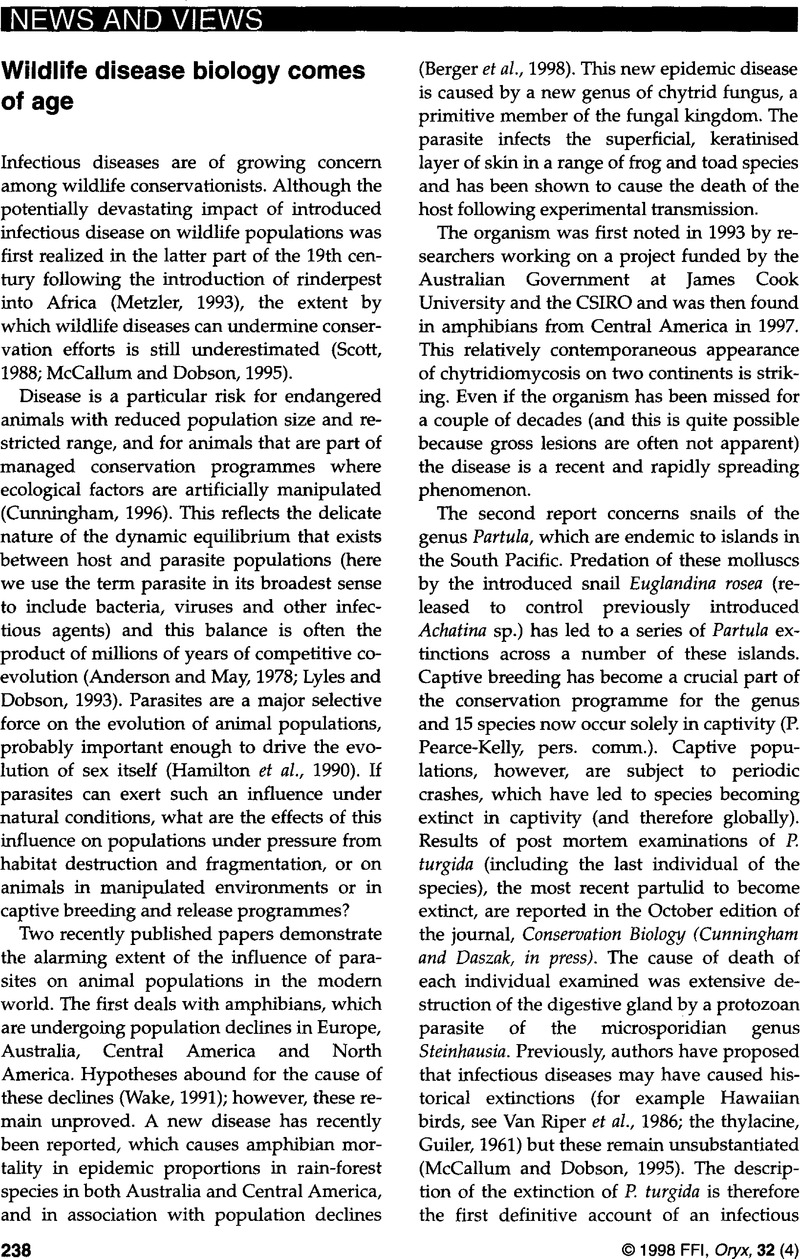Crossref Citations
This article has been cited by the following publications. This list is generated based on data provided by Crossref.
Daszak, Peter
Berger, Lee
Cunningham, Andrew A.
Hyatt, Alex D.
Green, D. Earl
and
Speare, Rick
1999.
Emerging Infectious Diseases and Amphibian Population Declines.
Emerging Infectious Diseases,
Vol. 5,
Issue. 6,
p.
735.
Stockwell, M. P.
Clulow, J.
and
Mahony, M. J.
2010.
Host species determines whether infection load increases beyond disease‐causing thresholds following exposure to the amphibian chytrid fungus.
Animal Conservation,
Vol. 13,
Issue. s1,
p.
62.



